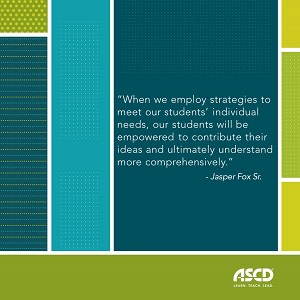Educators around the world have, by necessity, been forced to shift to remote learning. This has left them overwhelmed and unsure how to best support their students’ learning as they create virtual classrooms. As a result, instructional coaches are being forced to find new ways to support teachers. As an instructional coach myself, this can be daunting because a lot of our work involves classroom visits and meetings with teachers to help co-plan instructional practices. However, as we move to virtual learning, coaches will also need to find ways to coach virtually. Here are a few tips I have found helpful in supporting teachers in a remote learning environment.
Create a Coaching Hub
A coaching hub is important because it serves as your virtual “office,” and is a place where you can continue to communicate with your staff. Teachers will know where they can contact you, and it creates a central location for all of the resources you have shared. For me, I created a Google Classroom, and called it my coaching corner. Google Classroom is a great platform because it enables you to create topics for each content area, as well as share resources. It also allows you to share Google Calendar appointments so teachers can book appointments with you. Regardless of what platform you use, creating a central hub is essential for virtual coaching because it is a central location for communication and support for teachers and staff.
Gather and Vet Resources
One of the many responsibilities instructional coaches have is to gather and vet resources for teachers that enhance their instructional capacity. That is still the case with remote learning. However, as students’ daily screen time increases dramatically, it is critically important teachers use resources that create meaningful learning experiences for students. At the same time, teachers also want to be careful of giving just worksheets as busy work. Remember, the idea is to keep it simple, and use resources that meet students’ learning targets. This is where instructional coaches can help. Coaches can gather resources for teachers that engage students in learning, and offer support with the resources teachers are already using. For me, I use my Google Classroom as a hub to share and vet resources I have gathered for my teachers. I have not only collected resources for each content area, but also a list of resources to support virtual learning. This list includes various virtual learning resources and tutorial videos my teachers have made. As a coach, it is also important to remember your teachers are experts. It’s critical to harness their skillsets to find resources that respond to their needs. You will not only enhance their instructional capacity, but also create a community of collective responsibility at your school.
Continue to be a system of support
Now more than ever teachers need a continued system of support. They are being forced out of their comfort zones with remote learning, and that can be scary. To support teachers, instructional coaches can offer to meet through Zoom, Google Hangouts, or other virtual meeting platforms. This ensures coaches stay visible so teachers know we have their backs. It’s important that coaches stay positive. Our teachers are being pushed to their limits, and it can be frustrating. Remaining positive helps teachers navigate through the challenges of remote learning. One way I stay positive with my staff is by sending a Monday Motivational email each week. This usually consists of an inspirational quote or saying to lift my staff’s spirits. No matter what method you choose, it is essential that coaches continue to offer support so teachers have a community of colleagues to rely on.
There is no doubt that this is an unprecedented time in education. Teachers are feeling anxious and uncertain of how best to meet their students’ needs. While things seem uncertain, one thing we do know as educators is that we are all in this together. As instructional coaches, it is more important than ever that we continue to be a strong foundation for our teachers. Be responsive to their needs, and provide as much support as possible. Moreover, be that positive source of inspiration to your teachers. We will get through this.
About the author
Mannu Sikka is an educator with more than 10 years of experience as an instructional coach, classroom teacher, and an interventionist. She is also a 2019 ASCD Emerging Leader. Follow her on Twitter at @MannuKSikka.








